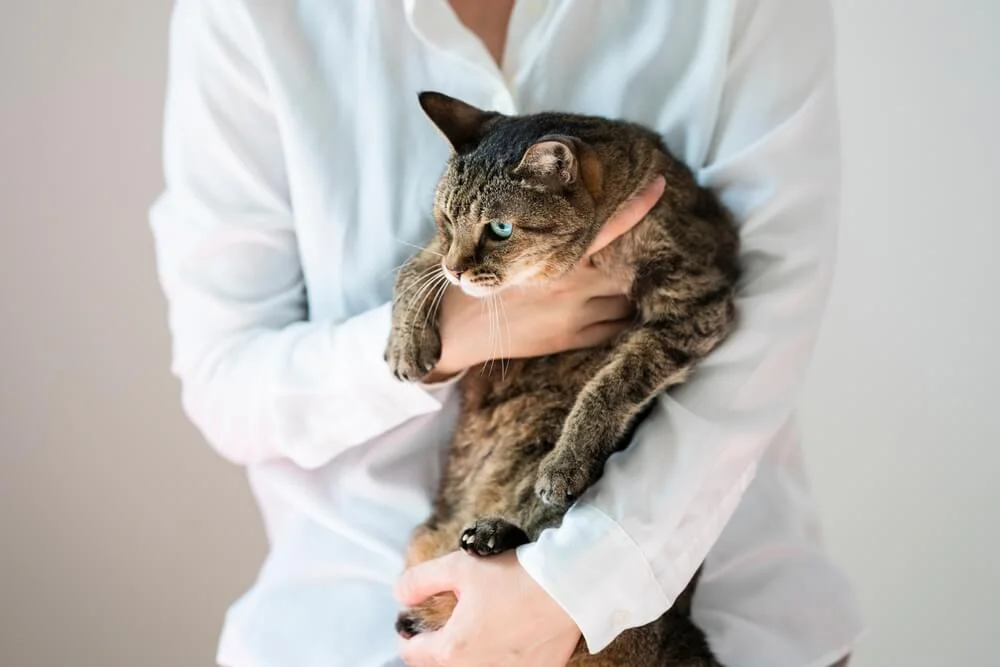
Why Cats Dislike Being Held and What You Can Do About This
Not every baby loves to stay in an adult’s arms. If such variations of love language exist among humans, imagine how different it would be showing affection to another species.
Cat lovers unconsciously show affection to their pets the human way. We want to pick them up, snuggle and hug them. But this is not the cat’s way of showing fondness. Your kitty, especially if she’s an adult, could wiggle her way out no sooner than you try to pick her up.
Of course, it could leave you frustrated and confused. It could also cause injury to you and the cat. Cat bites are the second most common pet attacks in Australia, and research shows there is a high chance of developing depression after one. But don’t worry. We might know why she’s doing that, and we will help you do something about it.
Understanding Cats’ Preferences: Holding and Handling
Cats, like humans, have varying preferences when it comes to being held and handled. While some cats may enjoy being cradled, others may not find it appealing. In this guide, we delve into the factors influencing cats’ attitudes toward being held and offer insights into understanding their behavior.
Breed-Specific Preferences
Contrary to the belief that all cats dislike being held, certain breeds have a more favorable disposition towards it. Ragdolls and Ragamuffins, for instance, tend to enjoy being held and often snuggle into the loving embrace of their owners. However, it’s essential to remember that even within these breeds, exceptions exist.
Early Socialization Matters
Cats that are comfortable with being held were likely socialized to it during their kitten days. Kittens that were regularly picked up and held are more likely to be receptive to it as adults. On the other hand, an adult cat that never experienced being held during her early life may find it unfamiliar and react by leaping out of your arms
Fear and Perceived Threat
From a cat’s perspective, being lifted off the ground by a human can be an intimidating experience. The size difference between a human and a cat can make the cat feel vulnerable and threatened. This perception of a “giant” looming over them can lead to discomfort during holding.
Traumatic Memories
Cats may have traumatic memories associated with being held if they had negative experiences in the past. Such experiences, even from another person, can leave a lasting impression on the cat’s behavior.
Desire for Freedom
Cats are naturally independent and value their freedom to roam and explore. When held, they might feel confined and restricted, triggering their instinct to escape. This instinct to be free can be likened to the pacing behavior observed in larger wild cats kept in cages.
Association with Unpleasant Experiences
Cats often associate being held with negative situations, such as preventing them from accessing restricted areas, giving them baths, or administering medications. These experiences can lead to a negative perception of being held.
Health Concerns
A sudden aversion to being held by a cat that typically didn’t mind it could be a sign of underlying health issues. Any deviation from their usual behavior patterns should prompt a visit to the veterinarian. Having reliable pet insurance can alleviate concerns about potential medical bills.
Breed-Specific Dispositions
Certain cat breeds, such as Bengals and Abyssinians, are known for their independent and less affectionate nature. These breeds may not appreciate being picked up and may react aggressively when held.
Signs of Discomfort in Cats
When picking up a cat, it’s crucial to be attentive to signs indicating discomfort. Getting close to the ground and releasing the cat slowly can help minimize stress. Look for signs like tense body posture, flattened ears, growling, or attempts to escape as indicators of a cat’s discomfort.
Understanding your cat’s preferences and respecting their boundaries when it comes to being held can lead to a more harmonious relationship. While some cats may relish being cradled, others may prefer less intrusive forms of affection. By considering their individual preferences and needs, you can ensure a more enjoyable experience for both you and your feline friend.
You will know that kitty doesn’t like the grab and embrace when:
- She tries to wiggle or squirm out of your arms.
- She has a low hanging tail and flicks it back and forth whenever you handle her.
- She runs away from you.
- There is no “chemistry” between you and the cat. You all know what we are saying.
If your cat shows these signs, and you’d like to pick her up without causing her stress, try to follow these tips:
What can you do to make her feel relaxed?
Let her go: For some cats, like Bengal, it’s a breed thing. If you have adopted an adult, you’ve done a noble act. But chances of successfully training her to be a lap cat are slim. Occasionally she could come and enjoy cuddling next to you. But don’t stress over it. Instead, show her affection “the cat way.”
Learn how to show affection the cat way: She could purr when around you, curl her tail around you, or rub her back against you. Cats express fondness in many different ways. Learn to appreciate these expressions as she gradually learns.
Here is what you can do to make her feel more comfortable as she learns.
Socialise her early: Start socialising kittens early, and let them get accustomed to your touch. Start petting them while they are in their “comfort zone” and gradually move them to your arms or laps.
Affirm her and reward her: Affirm her with excitement, and give her sweet treats each time she agrees to be held. Don’t force her, and don’t punish her whenever she wiggles away or retaliates. If she has bad memories of being held, it will gradually erase the bad memories.
Lastly, as you gradually win her trust, learn how to pick her up the right and understand her tolerance level. After all, love is all about respecting the other person’s/pet’s feelings.
Photo by Tony Wang
Get the latest Pet Insider Tips & News
We offer award-winning* pet insurance policies to protect your furry friend’s health and wellbeing. Get a quote today and give your pets the care they deserve.
Archives
Categories
- Cat Care (66)
- Cats (3)
- Dog Care (130)
- Guides (29)
- Health and Nutrition (203)
- Lifestyle and Activities (221)
- Media Release (38)
- Pet Care (255)
- Rescue Dogs (1)

